Abstract
The capability of macrophages to inactivate ingested staphylococci can be augmented when repeated infection is followed by specific elicitation with staphylococcal lysate. The increase in staphylococcidal capability with specific elicitation after infection is not dramatic but is statistically significant. The percentage of change in staphylococcidal capability after infection and specific elicitation is systematically related to the staphylococcidal capability of the populations of macrophages in the same rabbits studied prior to infection. When the capability of the initial populations of macrophages has been high, the percentage of change after infection and elicitation may be slight or even negative. When the staphylococcidal capability of the initial population of macrophages in a given rabbit has been low, there is typically a significant increase in this capability after infection and elicitation. It is shown at the cellular level that it is possible to evoke a population of activated macrophages, by a procedure which is analogous to procedures reported as useful in human practice.
Full text
PDF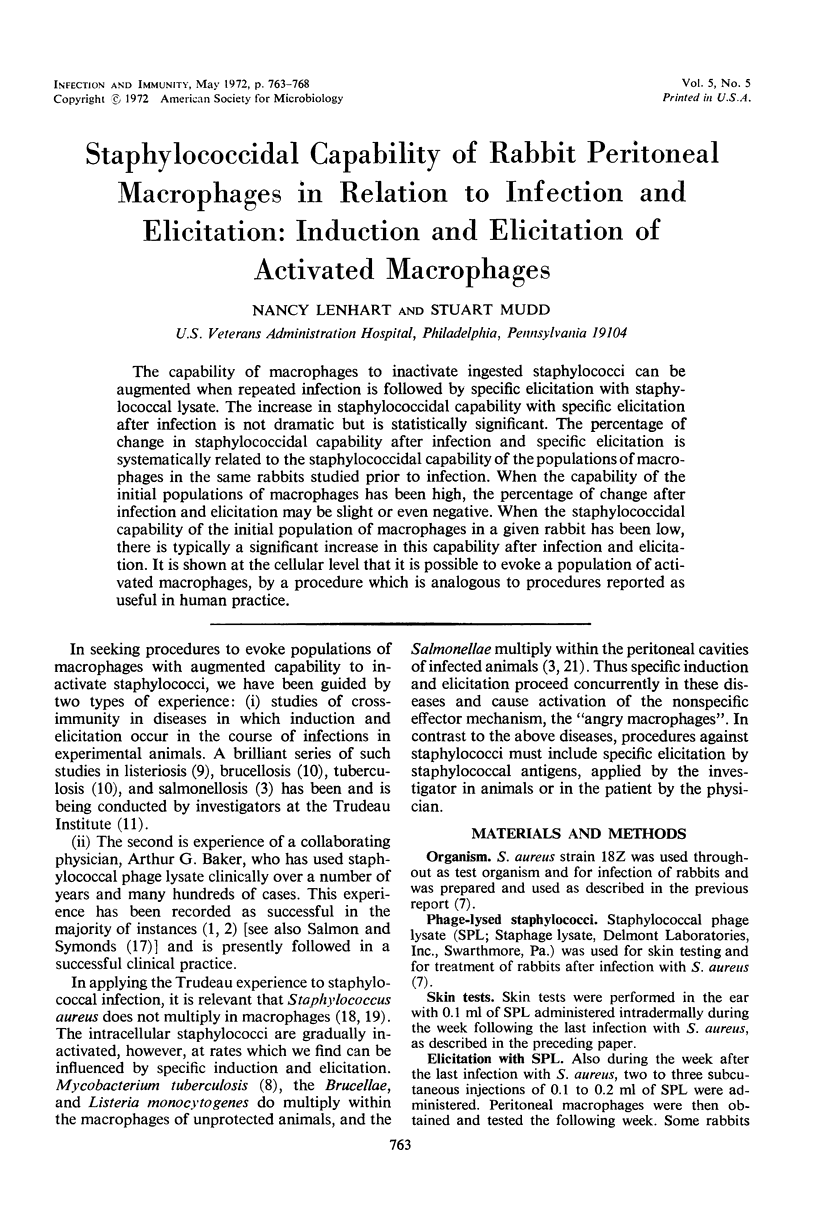
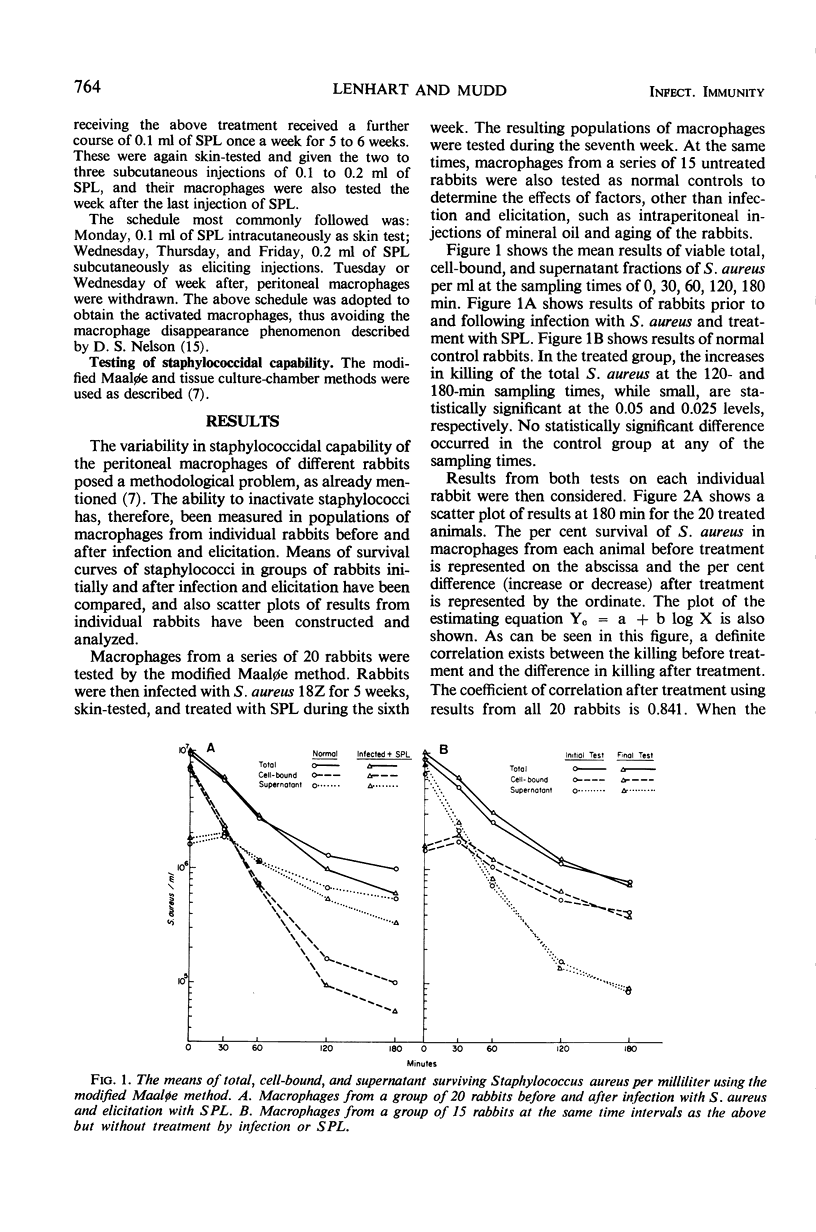
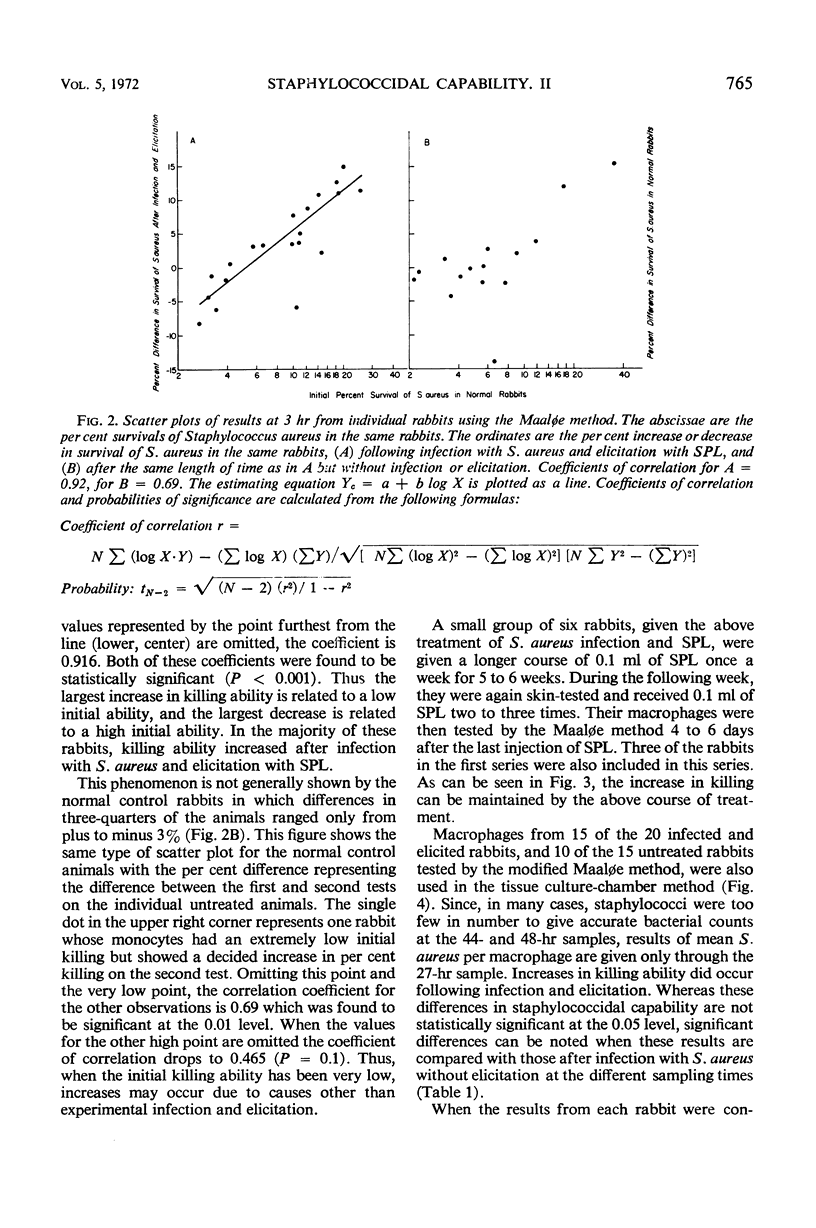
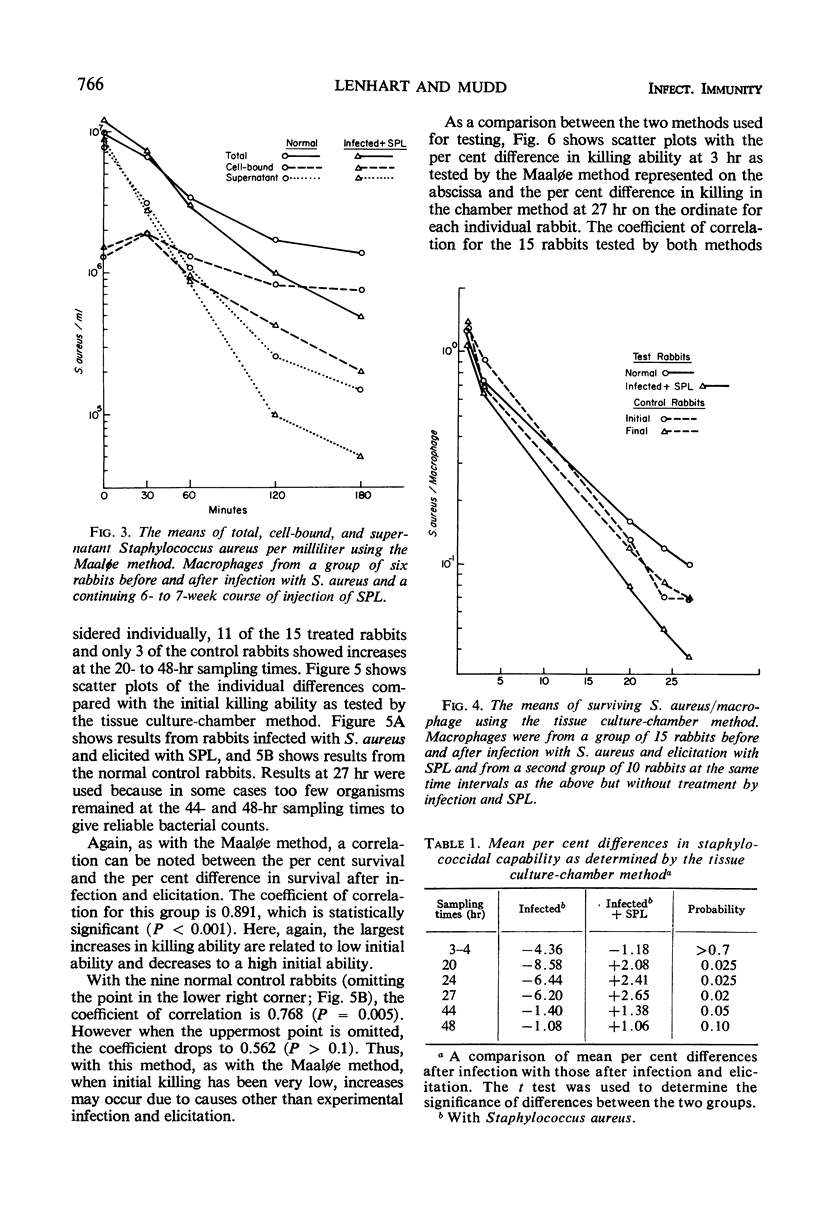
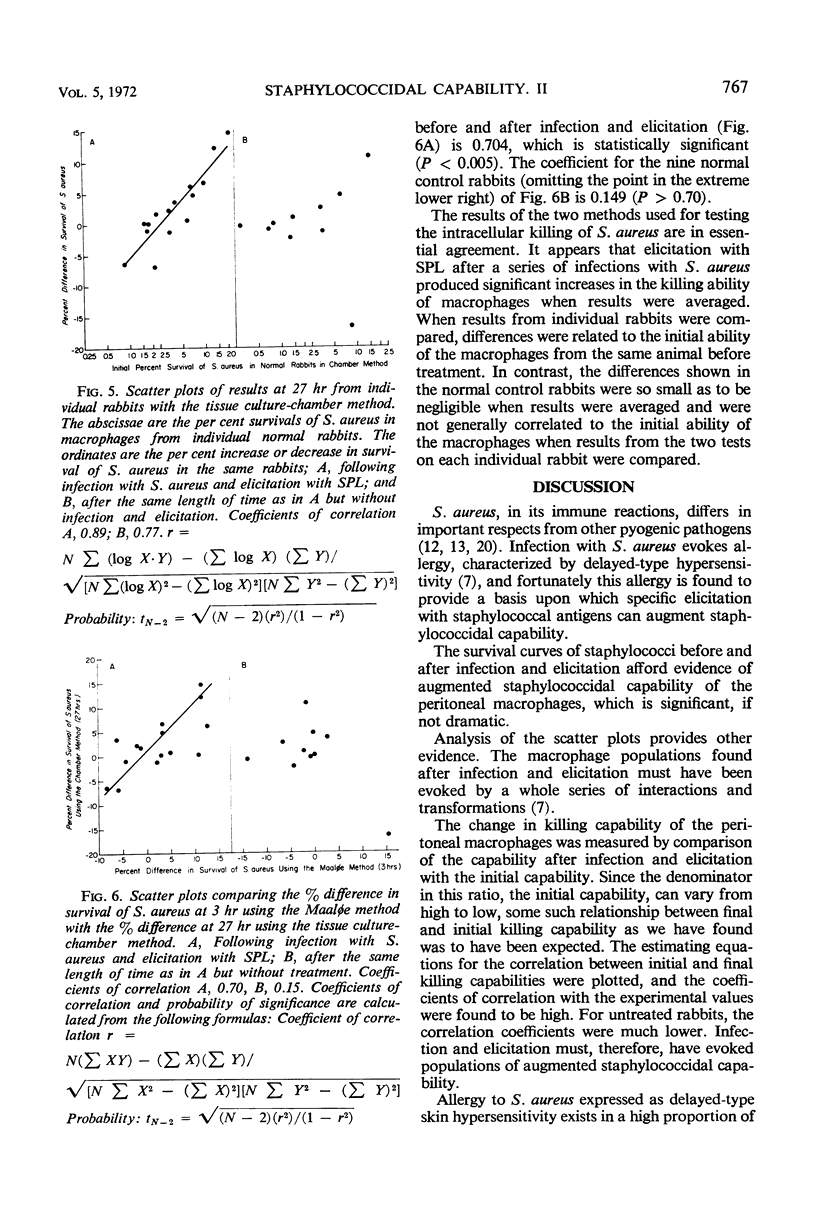
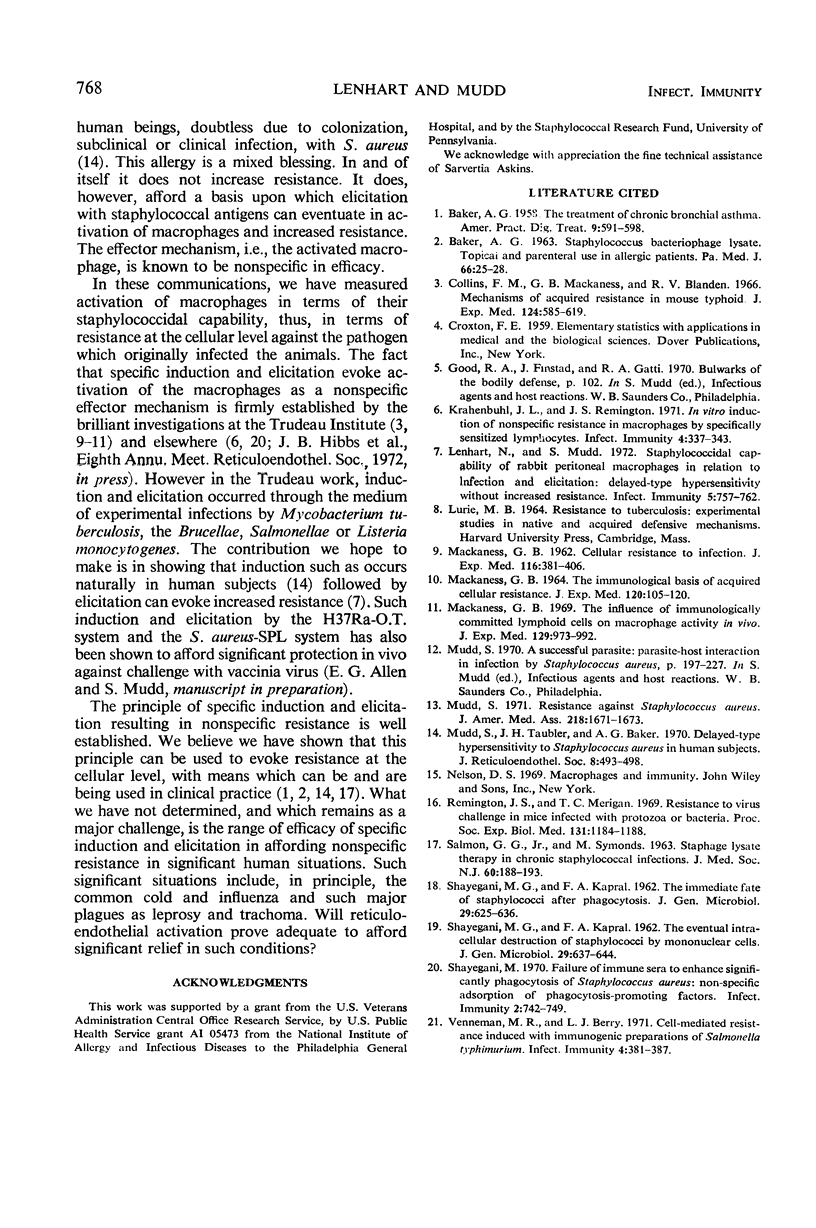
Selected References
These references are in PubMed. This may not be the complete list of references from this article.
- BAKER A. G. Staphyloccus bacteriophage lysate: topical and parenteral use in allergic patients. Pa Med J. 1963 Apr;66:25–28. [PubMed] [Google Scholar]
- Blanden R. V., Mackaness G. B., Collins F. M. Mechanisms of acquired resistance in mouse typhoid. J Exp Med. 1966 Oct 1;124(4):585–600. doi: 10.1084/jem.124.4.585. [DOI] [PMC free article] [PubMed] [Google Scholar]
- Krahenbuhl J. L., Remington J. S. In vitro induction of nonspecific resistance in macrophages by specifically sensitized lymphocytes. Infect Immun. 1971 Oct;4(4):337–343. doi: 10.1128/iai.4.4.337-343.1971. [DOI] [PMC free article] [PubMed] [Google Scholar]
- Lenhart N., Mudd S. Staphylococcidal capability of rabbit peritoneal macrophages in relation to infection and elicitation: delayed-type hypersensitivity without increased resistance. Infect Immun. 1972 May;5(5):757–762. doi: 10.1128/iai.5.5.757-762.1972. [DOI] [PMC free article] [PubMed] [Google Scholar]
- MACKANESS G. B. Cellular resistance to infection. J Exp Med. 1962 Sep 1;116:381–406. doi: 10.1084/jem.116.3.381. [DOI] [PMC free article] [PubMed] [Google Scholar]
- MACKANESS G. B. THE IMMUNOLOGICAL BASIS OF ACQUIRED CELLULAR RESISTANCE. J Exp Med. 1964 Jul 1;120:105–120. doi: 10.1084/jem.120.1.105. [DOI] [PMC free article] [PubMed] [Google Scholar]
- Mackaness G. B. The influence of immunologically committed lymphoid cells on macrophage activity in vivo. J Exp Med. 1969 May 1;129(5):973–992. doi: 10.1084/jem.129.5.973. [DOI] [PMC free article] [PubMed] [Google Scholar]
- Mudd S. Resistance against Staphylococcus aureus. JAMA. 1971 Dec 13;218(11):1671–1673. doi: 10.1001/jama.218.11.1671. [DOI] [PubMed] [Google Scholar]
- Mudd S., Taubler J. H., Baker A. G. Delayed-type hypersensitivity to Staphylococcus aureus in human subjects. J Reticuloendothel Soc. 1970 Nov;8(5):493–498. [PubMed] [Google Scholar]
- Remington J. S., Merigan T. C. Resistance to virus challenge in mice infected with protozoa or bacteria. Proc Soc Exp Biol Med. 1969 Sep;131(4):1184–1188. doi: 10.3181/00379727-131-34066. [DOI] [PubMed] [Google Scholar]
- SALMON G. G., Jr, SYMONDS M. STAPHAGE LYSATE THERAPY IN CHRONIC STAPHYLOCOCCAL INFECTIONS. J Med Soc N J. 1963 May;60:188–193. [PubMed] [Google Scholar]
- SHAYEGANI M. G., KAPRAL F. A. The eventual intracellular destruction of staphylococci by mononuclear cells. J Gen Microbiol. 1962 Dec;29:637–644. doi: 10.1099/00221287-29-4-637. [DOI] [PubMed] [Google Scholar]
- SHAYEGANI M. G., KAPRAL F. A. The immediate fate of staphylococci after phagocytosis. J Gen Microbiol. 1962 Dec;29:625–636. doi: 10.1099/00221287-29-4-625. [DOI] [PubMed] [Google Scholar]
- Shayegani M. Failure of Immune Sera to Enhance Significantly Phagocytosis of Staphylococus aureus: Nonspecific Adsorption of Phagocytosis-Promoting Factors. Infect Immun. 1970 Dec;2(6):742–749. doi: 10.1128/iai.2.6.742-749.1970. [DOI] [PMC free article] [PubMed] [Google Scholar]
- Venneman M. R., Berry L. J. Cell-mediated resistance induced with immunogenic preparations of Salmonella typhimurium. Infect Immun. 1971 Oct;4(4):381–387. doi: 10.1128/iai.4.4.381-387.1971. [DOI] [PMC free article] [PubMed] [Google Scholar]


